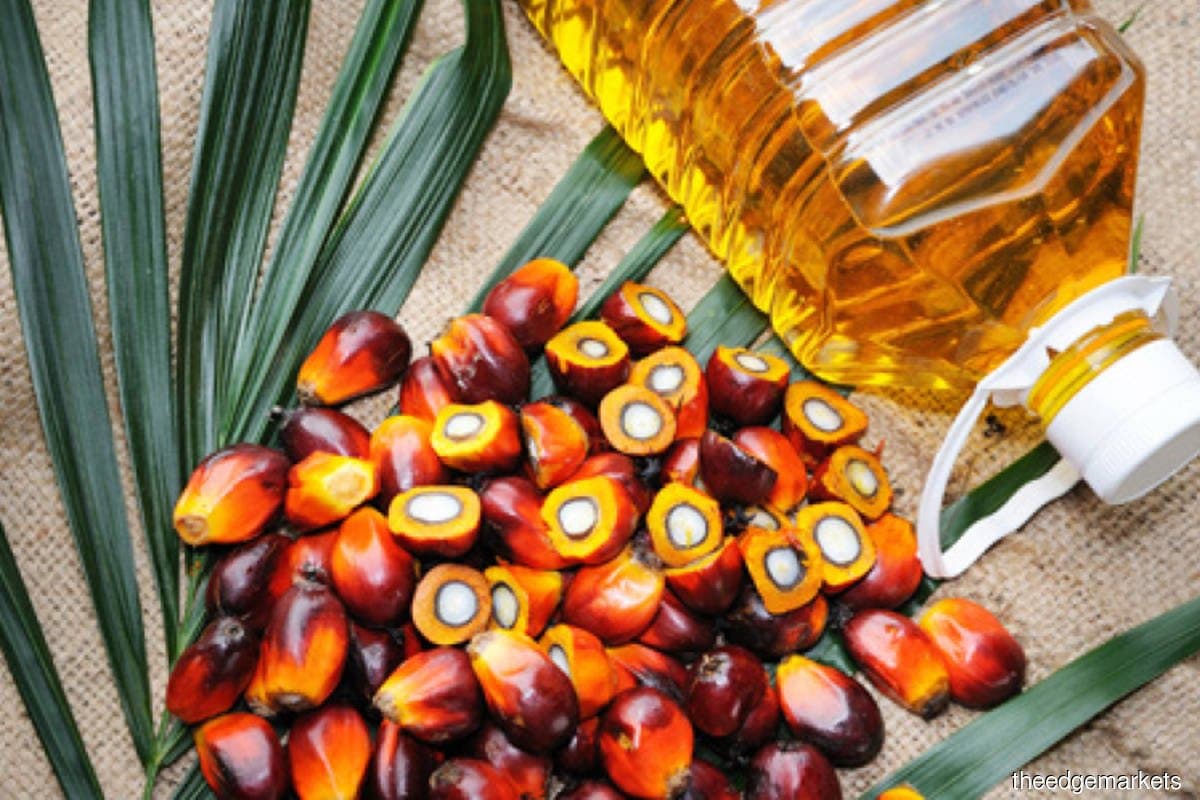
KUALA LUMPUR (Feb 8): Malaysia’s palm oil stock likely fell by 1.2% month-on-month (m-o-m) to 1.56 million tonnes in January due to weaker output, CGS-CIMB said Tuesday (Feb 8).
CGS-CIMB analysts Ng Lee Fang and Nagulan Ravi said in a note the stock level is 31% below the 10-year historical January average of 2.08 million tonnes.
“The likely m-o-m drop in stock level is lower compared to historical trends in Malaysia’s January palm oil stock movements (average: -6% m-o-m over the past 10 years),” they said.
On year on year (y-o-y) comparison, the palm oil stock likely grew by 18%, according to them.
Findings from a survey of palm oil areas by the CGS-CIMB Futures team also revealed that Malaysia’s crude palm oil (CPO) output likely fell 14.1% m-o-m, but grew 10.6% y-o-y, to 1.25 million tonnes in January.
Meanwhile, palm oil exports likely fell 27% m-o-m but rose 9.3% y-o-y to 1.04 million tonnes, based on export statistics by cargo surveyors Intertek Testing Services (-25.6% m-o-m), SGS (-27.08% m-o-m) and Amspec Malaysia (-25.86% m-o-m).
Ng and Ravi also said that the recent export rule in Indonesia, drought in South America, delays in foreign worker intake in Malaysia have led to a tight squeeze in palm oil.
“This coupled with the low production season for palm oil in the first quarter of 2022 are key reasons behind the surge in CPO prices — short-term positive for planters,” they said.
According to them, spot CPO price in Malaysia rose 4.5% to a new high of RM5,744 per tonne on Feb 4, after Jakarta announced on Jan 27 new export rules for Indonesian palm oil.
The new rules could delay the exports of palm oil from Indonesia as producers scrambled to satisfy the new ruling of selling 20% of their planned palm oil exports in the local cooking oil market at a maximum market price of Rp9,300/kg for CPO (at 38% below market price for CPO of Rp14,970/kg as at Feb 4, 2022), they said.
Based on the latest average selling prices for Indonesia and Malaysia, they said it would appear that the bulk of the costs to subsidise the domestic cooking oil market in Indonesia may have been currently borne by importers of palm oil via higher international CPO price.
This is because Indonesia’s CPO price has declined by only 1% (against Malaysia’s rise of 5%) since the republic announced that it will make it mandatory for palm oil producers to sell 20% of their exports domestically, they said.
On Feb 7, 2022, the Indonesian trade ministry said it has issued permits for six companies to export a total of 310,000 tonnes of CPO and 18,178 tonnes of palm olein. This represents only 20% of total exports of 1.6 million tonnes for CPO and processed palm oil in February 2021.
The other factors that are pushing CPO prices higher in February are the unresolved acute labour shortage issue in Malaysia and concerns over drought in South America, which is likely to reduce Brazil’s soybean output, according to Ng and Ravi.
However, they noted the high CPO prices will likely cause demand destruction in the food and fuel markets.
They opined that the recent rally in CPO price will benefit upstream palm oil players with estates in Malaysia and appears neutral for the same players with estates in Indonesia currently.
“There is upside to our projected average CPO price of RM3,600 per tonne in 2022 as we had expected a faster resolution to the labour issue and had not projected Indonesia’s move to regulate domestic cooking oil through export rules,” they said.
They also reiterated their sector neutral call for Malaysian planters as concerns over environmental, social and corporate governance issues are partly offset by strong earnings and undemanding valuations of the sector versus historical averages.
They also noted that Singapore and Indonesian planters offer cheaper valuations.